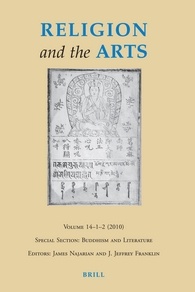
白若思副研究员论文:目连救母故事的画像与中国叙述性绘画的传统(10至15世纪)(Illustrations of the Mulian Story and the Tradition of Narrative Painting in China (Tenth–Fifteenth Centuries))
摘要:
本文介紹早期“目连救母”故事的圖像在中國流傳。目连救母的故事起源于一部中文佛经《佛说盂兰盆经》(只存中译文,約四世纪),讲述释迦佛弟子目连从饿鬼道救出他母亲的亡魂。這部经典在汉传佛教里有很重要的角色,因为它把佛教的修行理想结合于中国传统“孝”道德观念,又是中国民俗节日“中元节”的基础。虽然已有国内外学者探讨该故事在中国流传演变的历史,他们主要讨论相关的文献,仍没有人专门研究图象资料。作者比较几种目连救母故事的画像以便解释它们不同性质与用途,所分析的一些资料现在只存在国外(日本、韩国与俄罗斯)。早期目连故事的插图本与口头文学的传播有密切的关系:相关的画像出现在唐五代时期中国“变相”、“变文”体系内。十二至十五世纪该题材在中国俗文学作品的插图本中不断地发展演变,现存有几种佛教伪经与宝卷的插图本。作者能证明这些俗文学的插图作品受到不同社会阶层观众的欢迎,反应该题材的普遍性与重要的文化价值。
The story of Mulian rescuing his mother’s soul from hell was featured in numerous pictorial versions of different formats in China. They could take the form of multi-scene handscrolls, illustrations in manuscripts and editions, and separate scenes in devotional religious art objects such as murals and reliefs. The Mulian subject was of primary importance in the popularization of Buddhist ideas among different layers of society. The earliest extant pictorial versions of this story in China (tenth century) were related to Buddhist storytelling with the use of visual devices. Illustrations appeared in several written versions of the Mulian story that were circulated among different layers of society in China in the twelfth through fifteenth centuries. These illustrated versions showed different degrees of elaboration, spread among common folk and the imperial courts of the Yuan and Ming dynasties. In this article I explore the functions of the narrative illustrations of the Mulian story in various social contexts. These functions were quite varied in case of most art objects analyzed here: pictures in woodblock editions and manuscripts augmented the textual part and also made them appealing to the lay readers.